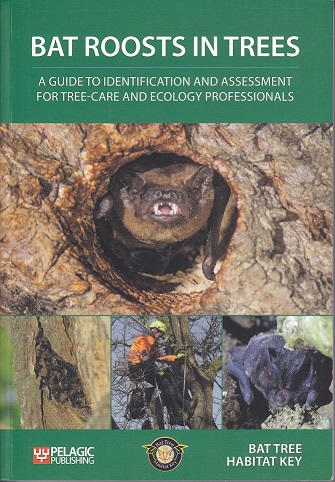
Publisher: Pelagic Publishing, Exeter
Publication Year: 2018
Binding: Softback
Page Count: 272
ISBN Number: 9781784271619
Price: £ 40.00
Bat roosts in trees
The ‘Bat Tree Habitat Key’ is a collaborative project, set up by Henry Andrews to provide a detailed account of how bat species in the UK exploit trees as roost sites. Mainly designed and written for tree-care and ecology professionals, the objective is to provide a practical and systematic framework for finding tree roosts, with defined thresholds for action.
Ultimately this project and the book, which is one output from this, provides a systematic framework for providing the evidence needed for making good decisions for bats, where in practice doing so if often based on incomplete information. I can see that this work is and has been extremely important in helping to set the standards against which people should work.
Not being an environmental consultant or working tree-care myself, this is not a book that I would choose to read from front to back. However, I still enjoyed reading sections of this book in relation to the behaviour and biology of bats in the UK, and in relation to the systematic framework that has been used, and to think about needs and gaps in knowledge in this sector. Two such areas come to mind. One is the production of population estimates for bats, particularly in relation to the high importance that these appear to be given in helping to prioritise and guide decision making by environmental consultants. Population estimates for UK bats have recently been updated, but even still, for most bat species these remain largely based on guesswork. The second relates to the need for standard monitoring of mitigation. In England, Natural England requires a report on actions taken to be submitted as a condition on all migration licences. In addition, post impact monitoring is required by condition on higher risk EPS licences, in principle to enable assessment of the effectiveness of the interventions. In practice, for a proportion of licences in which monitoring is required, it is either not undertaken or not reported, and the quality of information received is variable. This is an area where similar systematic approach framework is needed, that sets out standardised monitoring requirements, and ensures that valuable information, is collected, and contributes to evidence-based decision-making.
In summary, I would strongly recommend this book (and framework) to tree-care and ecology professionals, and it is potentially of broader interest within the scientific community.
Book reviewed by Stuart Newson
buy this book





Share this page